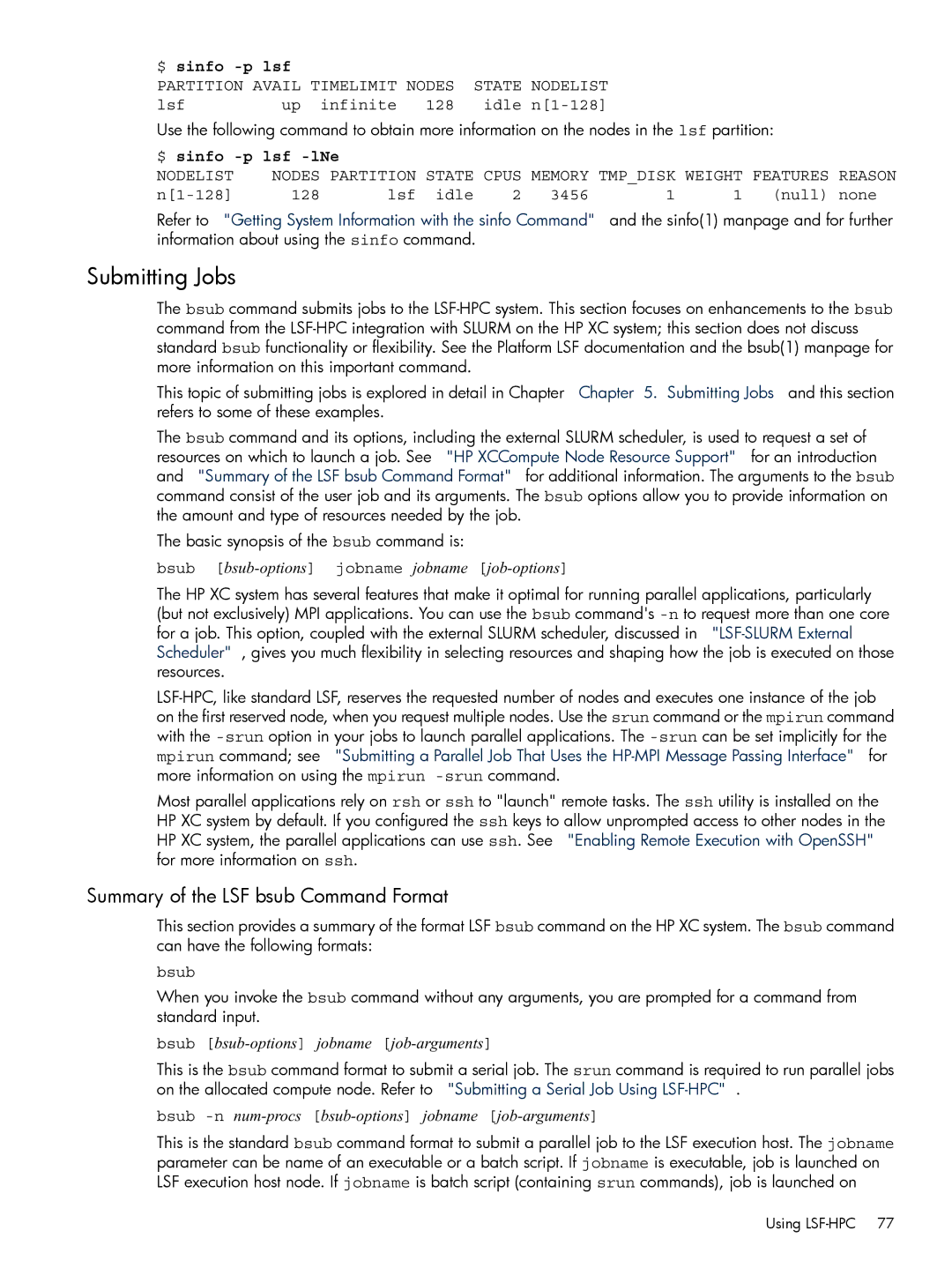$ sinfo -p lsf
PARTITION AVAIL TIMELIMIT NODES STATE NODELIST
lsf | up infinite | 128 | idle |
Use the following command to obtain more information on the nodes in the lsf partition:
$ sinfo |
|
|
|
|
|
|
| ||
NODELIST | NODES | PARTITION STATE CPUS | MEMORY | TMP_DISK | WEIGHT | FEATURES | REASON | ||
| 128 | lsf idle | 2 | 3456 |
| 1 | 1 | (null) | none |
Refer to "Getting System Information with the sinfo Command" | and the sinfo(1) manpage and for further | ||||||||
information about using the sinfo command. |
|
|
|
|
|
|
| ||
Submitting Jobs
The bsub command submits jobs to the
This topic of submitting jobs is explored in detail in Chapter Chapter 5. Submitting Jobs and this section refers to some of these examples.
The bsub command and its options, including the external SLURM scheduler, is used to request a set of resources on which to launch a job. See "HP XCCompute Node Resource Support" for an introduction and "Summary of the LSF bsub Command Format" for additional information. The arguments to the bsub command consist of the user job and its arguments. The bsub options allow you to provide information on the amount and type of resources needed by the job.
The basic synopsis of the bsub command is:
bsub [bsub-options] jobname jobname [job-options]
The HP XC system has several features that make it optimal for running parallel applications, particularly (but not exclusively) MPI applications. You can use the bsub command's
Most parallel applications rely on rsh or ssh to "launch" remote tasks. The ssh utility is installed on the HP XC system by default. If you configured the ssh keys to allow unprompted access to other nodes in the HP XC system, the parallel applications can use ssh. See "Enabling Remote Execution with OpenSSH" for more information on ssh.
Summary of the LSF bsub Command Format
This section provides a summary of the format LSF bsub command on the HP XC system. The bsub command can have the following formats:
bsub
When you invoke the bsub command without any arguments, you are prompted for a command from standard input.
bsub [bsub-options] jobname [job-arguments]
This is the bsub command format to submit a serial job. The srun command is required to run parallel jobs on the allocated compute node. Refer to "Submitting a Serial Job Using
bsub -n num-procs [bsub-options] jobname [job-arguments]
This is the standard bsub command format to submit a parallel job to the LSF execution host. The jobname parameter can be name of an executable or a batch script. If jobname is executable, job is launched on LSF execution host node. If jobname is batch script (containing srun commands), job is launched on
Using
